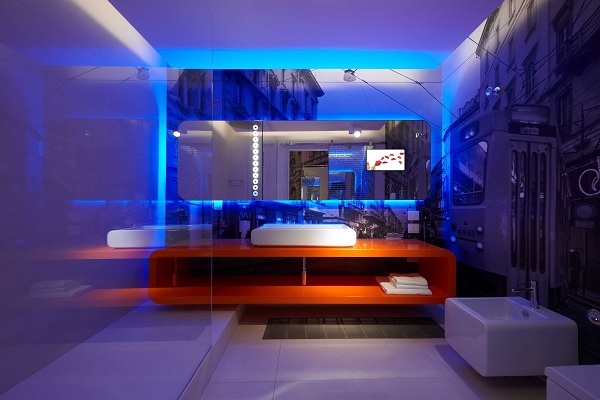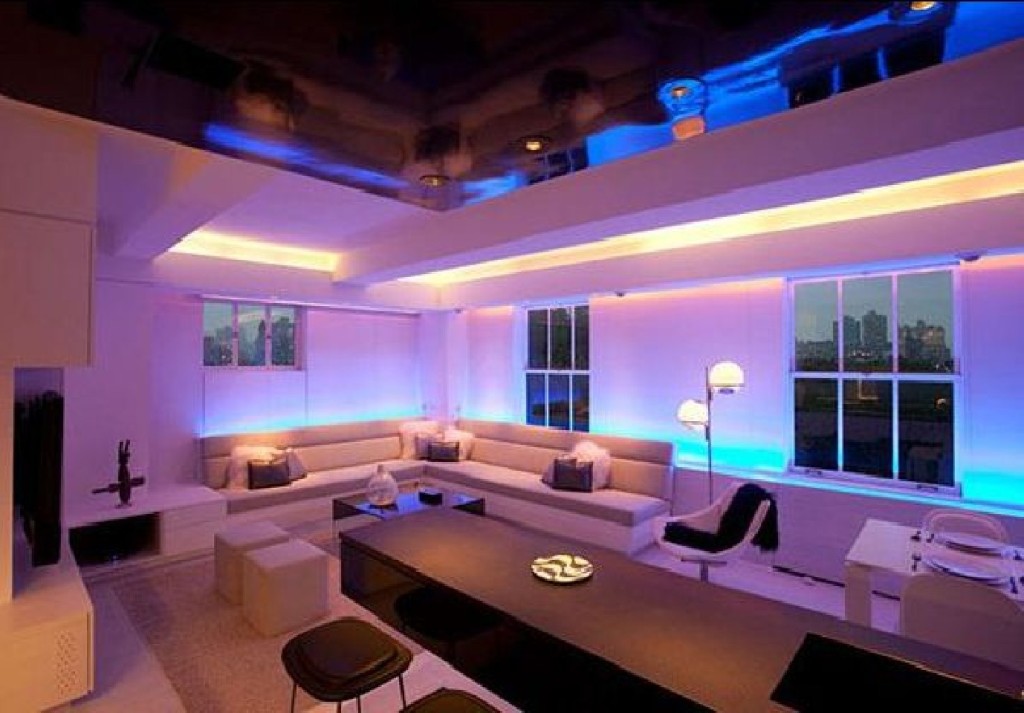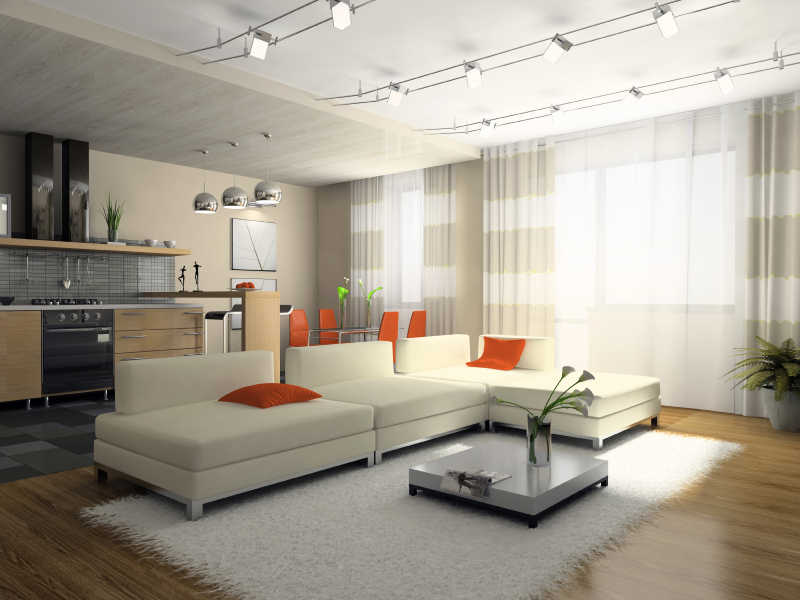The Different Types of Light Bulbs
Before you make any lighting purchase, know about the different types of lights available. You may think that all light bulbs are made to be the same, but that is very far from the truth. The color, shape, size distinguish some bulbs, number of lumens, and more. Several benefits and drawbacks come with every type of bulb. No bulb is the best, but LEDs come close because of the significant energy savings.
Incandescent Light Bulb
Incandescent bulbs are the most common and cheapest bulbs to use in homes and offices. The light emitted is usually a cool white that lasts an average of 1,000 hours. The incandescent light is more efficient when used with a dimmer, but there are more energy-efficient sources of light out there.
Halogen Light Bulb
Halogen lights are similar to incandescent ones but different in several ways. The light emitted is similar to natural daylight, so it is brighter and whiter. Colors and people stand out better under halogen lamps. Due to this major quality, halogen bulbs are more useful in certain rooms and situations. When you need to read and study carefully, do it under the brightness of halogens. Reduce the strain on your eyes when you look at fine details. When you see more clearly, you make fewer errors. Also, use halogen lamps to shine bright lights on objects like artwork. For large outdoor areas, make good use of floodlights.[2] Halogen lights save more energy and money than incandescent ones do. However, the cost is higher, and the temperature is higher. You should not touch a used bulb with your bare hand. The bulb can explode if it is warmed too fast.
Fluorescent Light Bulb
Fluorescent lights are more efficient than halogen and incandescent lights. The bulbs last for more hours than the incandescent ones because only a quarter of the energy is used. The light panels are commonly found in offices and commercial buildings that need simple, efficient lighting. An unfortunate side effect of fluorescent lighting is the flickering that comes with regular usage. The constant flickers could easily lead to continuous headaches for people directly underneath the lights. Also, you cut the lifespan when you always flip the light switch on and off. Use fluorescent lighting in rooms where the switch is not touched frequently, such as business offices. Know the 7 advantages of LED lights over fluorescent lights. Practicality is a word that is well suited for fluorescent lighting. Even so, some companies make decorative panels to cover the bland appearance of these lights. Some panels are made to look like clouds in the sky, and others are stained glass mosaic designs. There is no limit to the types of designs that can be applied to panels. Designers can also conjoin panels to create a quilt-like pattern on the ceiling. However, fluorescent lights are not known for the versatility and flexibility needed to create elaborate designs. LED lights are the best ones to use for decoration purposes.
Compact Fluorescent Light Bulb
Compact fluorescent lights (CFLs) are small, portable fixtures that last a decade longer than incandescent ones. CFLs turn on instantly, remain quiet without any buzz sounds, and shine in more colors. The ballast is included to maintain a safe amount of electrical current. Too much current shortens the lifespan of the bulb. The phosphor coating affects the way that the light color and brightness are perceived through the glass.[3] You can place the CFL fixtures in the slots where you have previously placed incandescent bulbs. CFLs were designed to replace the traditional bulbs. Also, know that the lights contain small amounts of mercury that become hazardous if exposed in the air. Fortunately, there are special bins to recycle these bulbs and dispose of the waste safely.
LED Light Bulb
LED stands for “light-emitting diode,” which is the newest and most improved form of lighting technology. The lights are many times more energy-efficient and longer-lasting. Even with all the advancements, LED lighting has a long way to go until full incorporation into households. The light is directional only, so it shines in one direction without diffusing all over the room. It is better suited for task lighting than ambient lighting. To get past this issue, there are improved models made of large clusters of LEDs.
The Cost Savings of Using LED Bulbs
Who knew that changing a simple light bulb could lead to big savings? That is the truth for anyone who knows about LED lights along with their incandescent and fluorescent counterparts. The savings could add up to hundreds of dollars a month and thousands of dollars every year. All light bulb users should consider the facts and figures before they make their next purchases. Learn how to be smart and save money on your energy bills.
To receive the most benefits, buy the right kinds of LED lights. Not all products are made the same. If you want to save money, be cautious before you buy discount LED emergency lights. Look for an Energy Star labeling, which means that the bulbs are qualified to provide significant savings. In the past, people were worried about buying LED lights that cost as much as $50 for one lamp. Nowadays, the average costs have declined and will continue to decline as technology improves. Even so, the initial cost should not be an issue when you consider the long-term savings. Here is information about technology that can save energy and lower your bills
The Environmental Impact of Using LED bulbs
There is no confusion about the tremendous effects that LED bulb manufacturing has on the environment. If every household in America replaced incandescent light bulbs with LED ones, there would be 9 billion pounds cut in greenhouse gas emissions. That amount of savings is equivalent to the removal of 800,000 vehicles from the road, according to the U.S. Environmental Protection Agency. The world’s developed countries need to reduce energy usage as much as possible, so LED light bulb programs are precious. Wherever reduced electricity is needed, there is a good use for LED lights. These bulbs use very small amounts of electricity that is needed to power entire rooms and buildings. Also, the exterior covering is solid and strong enough to sustain severe damage when dropped.
Light bulb waste and pollution
The use of LED and fluorescent lights leads to less waste and pollution. Incandescent bulbs contain hazardous substances like sulfur oxide and carbon dioxide. Also, these bulbs contain high amounts of lead that eventually end up in landfills. Lead poisoning affects humans and animals that use contaminated soil, waterways, and products. Even with all the advanced technologies available, lead and mercury poisoning continue to cause problems in ecosystems. No one handling LED devices has to worry about inhaling toxic gases or coming into contact with chemicals. For health and environmentally conscious people, this is a significant benefit that puts LEDs above other light sources. LED lights are clean, but not entirely clean of toxins and chemicals. Ideally, users should recycle these fixtures in recycling bins for electronics. The LED bulbs last for many more years than incandescent ones, so people do not worry about adding too much waste to landfills. Since fewer LED bulbs are being thrown out, there are fewer needs for manufacturing, shipping, and disposal. A single LED bulb outlasts six incandescent bulbs. Replace your entire house with LED bulbs that last as long as you live.
Ways to Decorate Your House using LED Light Bulbs
1. Decorate the door and window frames
You may not have thought about this decoration tip, but you can decorate your door and window frames. When the holiday season comes, this tip goes far in making your house look better. Place LED strip lights up, down, and across the frame. Bend and twist the strips anyway that you want to fill up space or corner that needs decorating. Cover outdoor frames with LED lights that sustain rainy and snowy weather. Create a unique holiday look by alternating different-colored strips or choosing bulbs that change colors automatically.
The same way that storefront business owners decorate their windows, you can do the same to yours. Create a bright, flashing, and non-flashing light display in the window. Include words, light bulbs, and toys for a complete look. If you are the attention-seeking type, it is an excellent way to ensure that everyone walks by your house and stares. The moment that guests walk into your house, make sure they never forget the door. LED lighting technology has allowed you to decorate doors and doorways. Instead of going for an old wreath, be more creative and festive with your holiday spirit.
2. Incorporate music cues
Good music is good to have all through the year, especially during the holidays. Once the music starts playing, people get into a better mood. See how you can sync music to play when the LED light bulbs switch on. No matter which room you stay in, control the songs that play with a controller. This technique is best used to play Christmas music during the holidays.
3. Create words and phrases with modules
Use thin, flexible LED modules to spell out different words and phrases. Improve the look of any message that you want to send out to neighbors and other people. Send out a greeting or a holiday wish that is seen for a mile away. Make sure that your message is seen well into the night, which is guaranteed with the proven reliability of LEDs. Consider creating your own signs using these modules. At home, put up a sign to attract people to a garage sale or lemonade stand. The lights shine for countless hours without flickering or burning out at any time in the night. Businesses frequently use LEDs in their colorful neon signs and billboards. Instead of using crayons, children can become more creative by experimenting with LED fixtures. Create illuminated words, images, and three-dimensional figures with the use of these lights.
4. Create a LED ball
If your home is too modest for a disco ball, create an LED ball yourself. For New Year’s Eve, be able to celebrate uniquely. Attach flexible light strips onto a spherical ball that rotates or stay still. For all of your guests, leave this light show on for many nights.
5. Decorate trees and plants
Make good use of mini LED lights to wrap around household trees and plants. For a Christmas tree, decide how many of these bulbs you need. For any remaining lights, wrap those around plants around the house. You can even hang miniature lanterns from the tree, too. No one should worry about fires because LEDs are waterproof and fire-resistant.
If you have an indoor garden, you can really enjoy this task. The LED lighting is ideal for spotlighting, so buy a big lamp that illuminates one object in the garden. Place these LED lights anywhere in or around the garden from the floor to the ceiling. LED light fixtures are highly advanced technologies that have finally found their way into homes. More homeowners see the benefits that come with using the bulbs and strips: low energy usage, low energy costs, and various color choices. Compared to incandescent lights, LEDs save more energy and save the environment in more ways. There are more lighting products available to decorate the interior and exterior of a home. Christmas lights, floor lamps, chandeliers, and light strips are just a few decorative fixtures that contain LEDs. There is no reason why a designer should ignore this innovative technology. References


